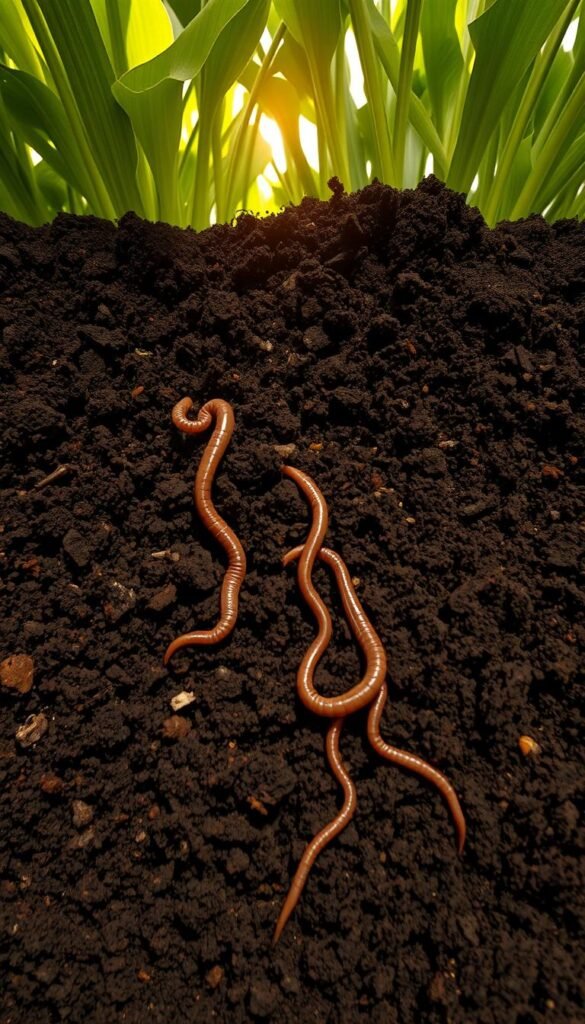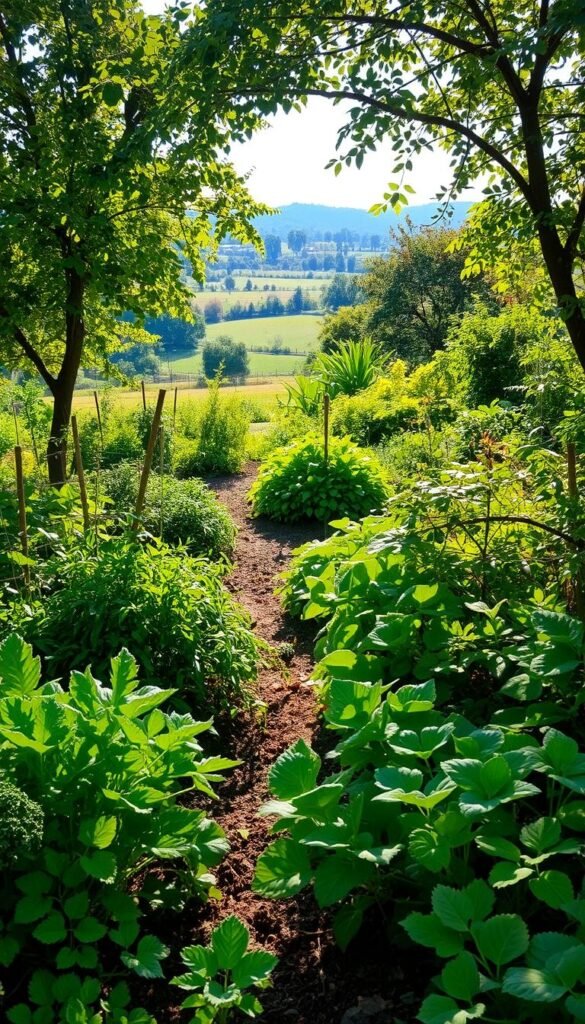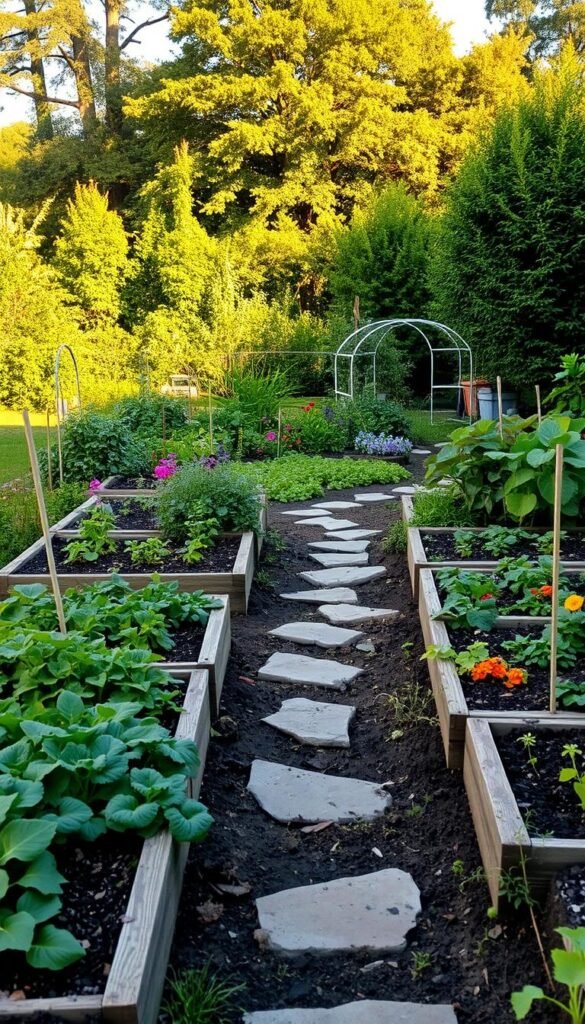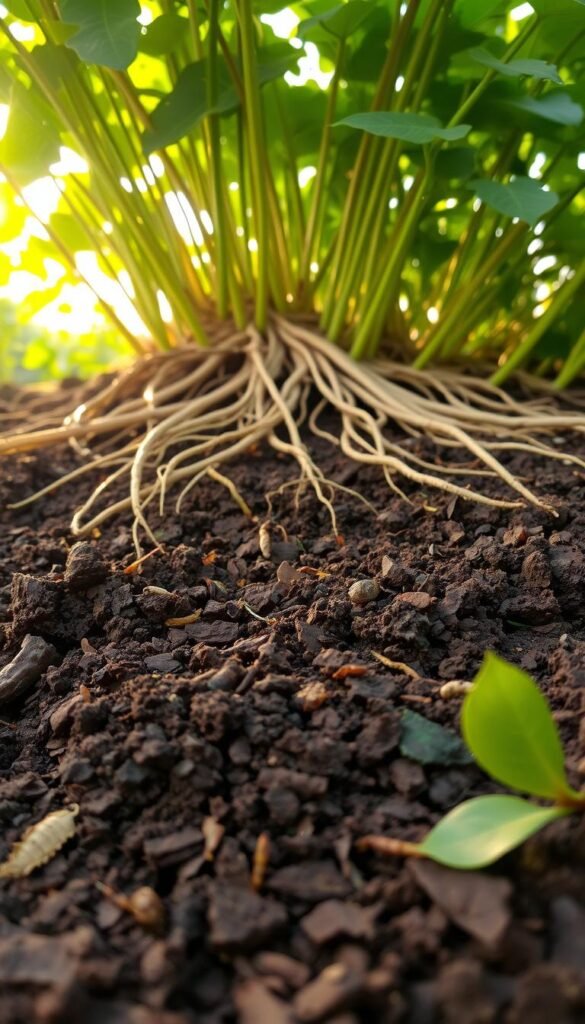Imagine your soil as a thriving city. Tiny microbes, fungi, and roots work together like a busy community. Traditional tilling? It’s like dropping a bomb—destroying homes and disrupting life beneath your feet.
For years, turning the earth was seen as essential. But research shows it harms structure, squeezes air pockets, and washes away nutrients. Over time, this weakens your garden’s foundation.
Now, a gentler method gains fans. By leaving the ground undisturbed, you protect its natural balance. Plants grow stronger, water stays longer, and you spend less time wrestling with weeds.
The secret? Work with nature, not against it. In the next sections, we’ll explore how this approach rewards you—and your patch of earth—for years to come.
What Is No-Till Gardening? A Smarter Way to Grow

Picture an underground world teeming with life. Fungi weave through the earth like nature’s internet, while roots and microbes trade nutrients in a silent partnership. This vibrant ecosystem thrives when left undisturbed.
Traditional tilling breaks apart this delicate balance. It chops up fungal networks, crushes air pockets, and exposes buried weed seeds to light. Over time, compacted soil struggles to hold water or nutrients.
The method flips the script. Instead of turning the earth, you build from the top down. Layers of mulch and organic matter protect the ground like a blanket. Earthworms do the tilling for you, naturally aerating as they tunnel.
Research shows this approach boosts structure by up to 40% compared to tilled plots. As horticulturist Erica Chernoh notes:
“Non-mechanical approaches often achieve better long-term results.”
Here’s how it works:
- Weed control: Mulch blocks sunlight, stopping dormant seeds from sprouting
- Water retention: Untouched soil absorbs rain like a sponge
- Nutrient cycling: Microbes break down mulch into plant-ready food
Farmers first developed these techniques to prevent erosion. Now, home growers are adapting them with stunning results. Your backyard becomes a self-sustaining habitat where every organism plays its part.
No-Till Gardening for Backyard Spaces: Key Benefits

Healthy soil is the foundation of a vibrant, low-maintenance garden. By avoiding disruptive tilling, you preserve its delicate ecosystem. The results? Stronger plants, fewer weeds, and less watering—all while saving time.
Healthier Soil, Happier Plants
Untouched earth teems with life. Mycorrhizal fungi—nature’s nutrient highways—thrive in no-till systems, boosting nitrogen uptake by 58% (UW-Madison). Earthworms, 3x more abundant (Rodale data), aerate the ground naturally.
Key advantages:
- Nutrient cycling: Microbes break down organic matter into plant-ready food.
- Structure: Fungal networks improve soil aggregation by 30% (OSU).
Weed Control Without the Backache
Tilling chops weed roots, spreading them further. Instead, smother invaders with 8–10 inches of straw—reducing weeding time by 70%. Proper mulch blocks sunlight, preventing 90% of weed growth.
Water Conservation Made Easy
Mulch acts like a sponge, cutting evaporation by 50%. After three years, no-till plots retain 40% more moisture (University of Maine). Use the finger test: If the top inch feels dry, it’s time to water.
| Benefit | Tilled Soil | No-Till Soil |
|---|---|---|
| Water Retention | Low (needs frequent irrigation) | High (30% less water needed) |
| Weed Growth | High (seeds exposed) | Low (smothered by mulch) |
| Microbial Activity | Disrupted | Thriving |
Ready to simplify your routine? Explore no-till systems tailored for small spaces.
How to Start a No-Till Garden: 3 Simple Methods

Transform your patch of earth with these effortless techniques. Each method builds fertile soil while protecting its hidden ecosystem. Choose one or combine them for a thriving, low-maintenance space.
Lasagna Gardening (Sheet Mulching)
Also called sheet composting, this method uses layers to smother weeds and feed the soil. Start in fall for spring planting:
- Base layer: Cardboard or newspaper (blocks weeds)
- Green materials: Kitchen scraps, grass clippings (nitrogen-rich)
- Brown materials: Straw, leaves (carbon for balance)
Alternate until the pile reaches 18 inches. Water each layer to speed decomposition. By spring, earthworms will turn it into crumbly compost.
Cover Cropping for Beginners
Plant these temporary crops to enrich soil naturally. Crimson clover and fava beans add nitrogen—no tilling needed. Here’s how:
- Sow seeds in fall or early spring
- Let plants grow until flowering
- Mow down and leave as mulch
Cold weather kills some varieties, eliminating herbicide use. For tougher plants, try the “crimp and roll” method with a lawn roller.
The Back-to-Eden Approach
Popularized by Paul Gautschi, this technique uses 4–6 inches of wood chips. Over 20 years, his trials showed:
| Material | Benefits | Best For |
|---|---|---|
| Wood chips | Retains moisture, regulates pH | Perennials, fruit trees |
| Straw | Lightweight, decomposes fast | Annual vegetables |
Pro tip: Sift mulch for carrot seeds—they struggle in thick chips. Repurpose billboard vinyl as a weed barrier under organic material.
Ready to dive deeper? Explore no-till techniques tailored for small spaces.
Essential Materials for Your No-Till Garden

Your garden’s success starts with the right materials—think of them as building blocks for healthy soil. Mulch and compost work together to protect and nourish, but each plays a unique role. Choosing wisely saves time and boosts plant health.
Choosing the Right Mulch
Mulch acts like a blanket, locking in moisture and blocking weeds. Straw is ideal for veggies—it’s lightweight and decomposes in a season. Wood chips last longer, perfect for perennials.
Avoid chemically treated grass clippings. They can harm microbes. Instead, use leaves or cardboard for a safe, budget-friendly option.
Pro tip: Fresh wood chips won’t steal nitrogen if layered correctly. Pair them with organic matter like aged manure (OSU’s recommendation) for balanced nutrients.
Compost vs. Mulch: What’s the Difference?
Compost feeds plants immediately, while mulch breaks down slowly. Think of compost as a meal and mulch as a slow-release snack.
For lasagna gardening, balance “brown” (carbon) and “green” (nitrogen) layers:
- Brown: Straw, dried leaves (2 parts)
- Green: Kitchen scraps, grass (1 part)
Turn monthly for faster decomposition. Local tree services often offer free wood chips—a smart hack for no-dig beds.
| Material | Best For | Decomposition Time |
|---|---|---|
| Straw | Annuals | 3–6 months |
| Wood chips | Trees/shrubs | 1–2 years |
| Leaves | Soil amendment | 6–12 months |
Layer wisely, and your garden will thrive with minimal effort. Healthy soil means happier plants—and less work for you.
Common Challenges and How to Solve Them
Spring brings unique hurdles for untouched soil—but simple fixes exist. Whether it’s chilly ground or finicky seeds, these solutions keep your garden thriving.
Dealing with Slow Soil Warming in Spring
Untouched earth stays cooler longer. To speed things up, pull back mulch in early spring (OSU’s top tip). Black plastic sheeting absorbs sunlight, warming the ground faster for early crops like peas.
Cloches—transparent covers—trap heat around seedlings. Or try this hack: Plant cool-weather crops two weeks later than in tilled plots. They’ll catch up quickly in healthier soil.
Planting Seeds in a No-Till System
Large seeds like beans thrive with Ruth Stout’s method:
“Dig a shallow trench, drop seeds in, and cover with compost. Let nature do the work.”
For tiny seeds, mix radish and lettuce to mark rows. Use fine compost for direct sowing—it’s lighter than dense soil. Poke holes in cardboard layers to prevent root-binding.
Slugs love tender sprouts. Deter them with diatomaceous earth or copper tape. Remember: Patience pays off. Your soil’s ecosystem is rebuilding—each season gets easier.
Embrace the No-Till Lifestyle for a Thriving Garden
Your garden becomes more vibrant each year when you work with nature. Studies show untouched soil gains 1-2% organic matter annually (OSU), leading to healthier crops and fewer pests. One grower reported “30% higher yields with 50% less labor over 3 years.”
Start small—convert one bed per season. Over time, you’ll notice more earthworms, better water retention, and resilient plants. A thriving ecosystem means less work for you and more homegrown food.
Connect with local growers through workshops or forums. As expert Erica Chernoh reminds us: “Your soil isn’t just dirt—it’s a living community.” Ready to begin? Explore organic gardening basics to deepen your practice.






